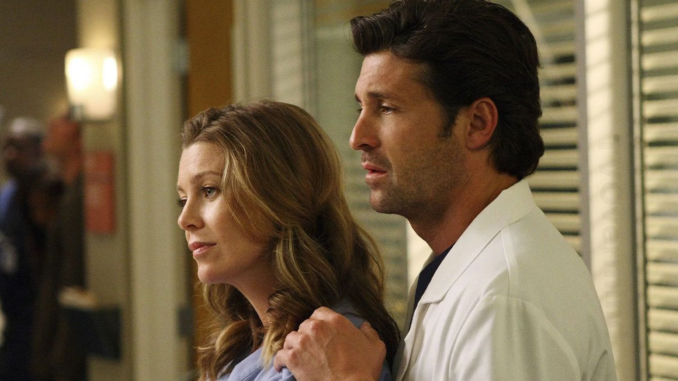
Introduction: A Dark Turn in Grey’s Anatomy Season 21
For over 15 years, Grey’s Anatomy has captivated audiences with its gripping drama, shocking plot twists, and unforgettable characters. While it is known for heartwarming moments and emotional highs, the series has never shied away from showing the darker side of medicine. However, Season 21 took a deeper, more honest approach to the harsh realities of working at Grey Sloan Memorial Hospital.
This season, Grey’s Anatomy revealed the emotional toll of being a doctor in a way that felt more authentic and raw than ever before. The show depicted not only the pressures of providing life-saving care but also the psychological and emotional strain that comes with it. In Season 21, we see how the weight of life-and-death decisions, hospital politics, and personal sacrifice create an environment that’s often darker than fans realize.
But what exactly makes this season stand out? Let’s take a closer look at how Grey’s Anatomy Season 21 nailed the darkest reality of working at Grey Sloan Memorial.
The Harsh Reality of Medicine: A Behind-the-Scenes Look at Grey Sloan
Working in a hospital isn’t all glamour and heroism. While TV dramas often portray doctors as perfect saviors, Grey’s Anatomy has consistently highlighted the personal and professional challenges doctors face. Season 21, however, takes this exploration even further, emphasizing the emotional burnout and toll that long hours, constant life-or-death decisions, and personal struggles can have on the medical staff.
Emotional Toll: When Doctors Can’t Save Everyone
In Season 21, one of the most significant themes is the devastating emotional toll on doctors who are forced to confront their limitations. In many episodes, we witness the doctors of Grey Sloan facing cases where they cannot save every patient. This creates a sense of helplessness that’s often not depicted on screen, and it’s especially haunting when characters like Meredith Grey or Miranda Bailey have to confront their inability to fix things.
This exploration of failure is crucial because it highlights an often-ignored reality in medicine: not every patient survives. The doctors may be skilled, but they’re still human. The grief and guilt of losing patients, especially when they become emotionally attached, are real aspects of a medical career, and Grey’s Anatomy portrays this pain in a way that hits home for both doctors and viewers alike.
Hospital Politics: A Dangerous Game at Grey Sloan
Working in a high-pressure environment like Grey Sloan Memorial Hospital isn’t just about saving lives—it’s also about navigating the complex and often toxic dynamics of hospital politics. In Season 21, we see how hospital hierarchy, budget cuts, and administrative decisions affect the doctors’ ability to do their jobs.
A High-Stakes Power Struggle
In one particularly gripping storyline, we see the hospital’s new leadership try to implement cost-cutting measures that threaten to undermine patient care. The power struggle between the administration and the medical staff forces the doctors to make difficult choices, testing their professional ethics and loyalty to their patients. These decisions don’t just impact the patients—they also have long-term effects on the doctors’ mental health, creating a ripple effect that extends well beyond the operating room.
This behind-the-scenes glimpse into the power plays and politics that influence the daily workings of Grey Sloan highlights the difficult reality that even highly skilled doctors can find themselves trapped in a system that doesn’t always prioritize patient well-being.
The Burnout Crisis: Doctors Are Humans Too
One of the darkest and most heartbreaking themes in Season 21 of Grey’s Anatomy is the issue of burnout. For years, the show has explored the toll that long hours and emotional stress take on the doctors. However, in this season, we see the issue reach a breaking point.
Long Hours and Emotional Exhaustion
Season 21 doesn’t shy away from showing how the never-ending demands of the job weigh heavily on doctors, nurses, and other medical staff. With the hospital constantly overcrowded and understaffed, doctors are working longer hours than ever before. The strain of seeing patient after patient without time to process the emotional aftermath begins to take a visible toll on both their physical and mental health.
From Miranda Bailey’s struggles to cope with the constant pressure to Meredith Grey’s growing sense of isolation, Grey’s Anatomy highlights the impact of burnout on the doctors’ personal lives, relationships, and mental health. It shows the importance of self-care—something that many medical professionals forget as they continue to put their patients first.

The Emotional Strain of Lifesaving Decisions
In one particularly heart-wrenching scene, we watch a doctor, who has been tirelessly working without adequate rest, struggle to make a crucial decision in the operating room. The weight of the patient’s life, combined with overwhelming exhaustion, makes the situation even more intense. This is where Grey’s Anatomy delivers a powerful message: doctors aren’t immune to the pressures of their profession, and their well-being is just as important as their patients’.
Personal Sacrifice: When Family and Career Collide
In Grey’s Anatomy, the balance between career and personal life is a consistent theme. However, in Season 21, the show dives deeper into the sacrifices that medical professionals make—often at the expense of their families and personal happiness.
Struggling to Be Present for Loved Ones
Several characters in Season 21 are forced to confront the toll their jobs have taken on their relationships. For instance, we see doctors struggling with the choice between being at work for a life-saving surgery or being there for their children during a family crisis. The inability to balance these competing priorities results in a sense of guilt, regret, and, ultimately, emotional strain.
The show brilliantly captures how doctors sometimes feel torn between their love for their work and their duty to their families. The inability to meet both needs often leaves them feeling as though they are failing on all fronts—an experience that many real-life medical professionals can relate to.
The Cost of Saving Lives: Mental Health Issues Among Medical Staff
While Grey’s Anatomy has always explored the trauma doctors experience, Season 21 takes a more profound and honest look at the mental health crisis among healthcare professionals. The constant exposure to trauma, death, and suffering can leave lasting scars, and this season delves into the impact this has on the doctors’ mental well-being.
Therapy and Coping Mechanisms: A Rare Glimpse into Mental Health
In a brave move, the series introduces more scenes of doctors attending therapy sessions, seeking mental health support, and discussing the emotional toll of their jobs. This is a refreshing change from the usual portrayal of doctors as invincible heroes. In reality, healthcare professionals often carry invisible burdens that affect their mental and emotional health.
Season 21 doesn’t shy away from portraying the vulnerability of these characters, showing how essential it is for doctors to take care of their own mental health in order to better care for their patients.
Conclusion: A Brutal Yet Necessary Reflection of the Medical Profession
Grey’s Anatomy has always strived to reflect the complexities of working in a hospital environment, but Season 21 takes this to a new level. It doesn’t just show the glamorous side of saving lives—it delves deep into the darkest realities of working at Grey Sloan Memorial. From the emotional exhaustion to the burnout crisis, this season highlights the very real human cost of being a doctor.
By focusing on the mental health struggles, the burnout epidemic, and the toll that hospital politics take on healthcare workers, Grey’s Anatomy Season 21 paints a more honest, if not harsher, picture of the medical profession. It forces us to recognize that while doctors may be our heroes, they too are human, and their work comes at a cost.
FAQs
1. Why is Season 21 of Grey’s Anatomy so different from previous seasons?
Season 21 takes a more realistic approach to the medical profession, focusing on the emotional toll, burnout, and mental health issues faced by doctors. It gives a more in-depth look at the struggles healthcare workers face, both professionally and personally.
2. How does Season 21 portray burnout among doctors?
In Season 21, Grey’s Anatomy highlights the constant pressure, long hours, and emotional strain on medical professionals. It explores how these factors contribute to burnout, showing the mental and emotional toll it takes on the doctors.
3. Does Season 21 focus on personal stories of the characters?
Yes, Season 21 dives into the personal struggles of the doctors, particularly how their demanding jobs affect their relationships and family life. It portrays the sacrifices they make in the name of their career.
4. Is mental health addressed in this season of Grey’s Anatomy?
Absolutely. Season 21 introduces therapy sessions and shows characters seeking help for their mental health, breaking the stigma around doctors needing support for their own well-being.
5. How does Season 21 portray the relationship between hospital politics and patient care?
The season explores the tension between hospital administration and medical staff, showing how decisions made for financial or political reasons can negatively impact patient care and staff morale.
